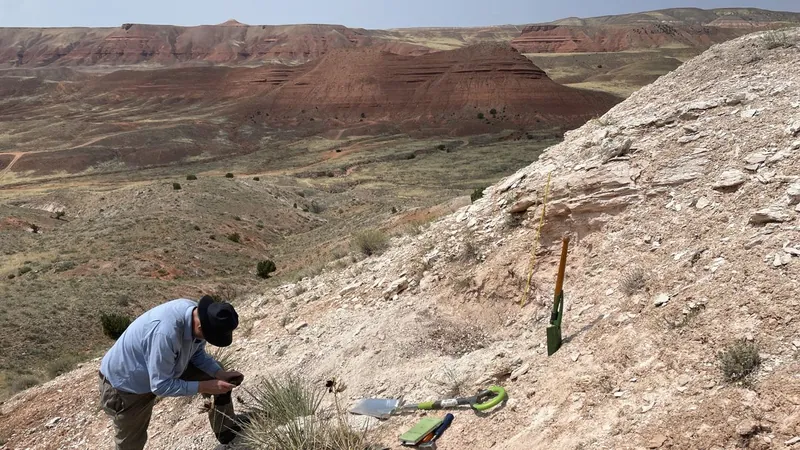
Unveiling the Secrets: Mysterious Volcanic Eruptions Discovered Beneath Yellowstone
2025-04-10
Author: Mei
A Groundbreaking Discovery in Wyoming
In a stunning revelation, scientists in Wyoming have stumbled upon evidence of two ancient volcanic eruptions, predating the infamous Yellowstone supereruption that took place 631,000 years ago. This remarkable finding could reshape our understanding of Yellowstone's volcanic history.
The Hidden Ash Deposits
The hidden ash deposits were found beneath the Lava Creek Tuff, a vast mass of compacted volcanic ash resulting from Yellowstone's last massive eruption. While the specific origins of this new ash are yet to be determined, researchers expect to unveil more by the fall of 2025, when test results are anticipated.
A Surprising Field Trip Revelation
Madison Myers, an associate professor from Montana State University and a member of the research team, initially believed the complex topography was merely an illusion. However, as they explored, they were astounded to identify layers of different ashfall that hinted at previous eruptions, remarking, "It was amazing."
Rethinking Yellowstone's Volcanic History
The study focused on two distinct layers within the Lava Creek Tuff, termed member A and member B, indicating shifts in volcanic material during Yellowstone’s past eruptions. The team's excitement grew upon discovering signs of unidentified, older eruptions buried deep beneath these known layers.
Tracing the Origins: A Complex Puzzle
Due to their location, the newly found ash must be older than the last major Yellowstone eruption. Previous supereruptions, such as the Mesa Falls Tuff event 1.3 million years ago and the Huckleberry Ridge Tuff eruption 2.1 million years ago, might be linked to these ash deposits. However, preliminary tests imply that one of these layers doesn't correlate with known Yellowstone eruptions.
The Bishop Tuff: A Possible Culprit
One intriguing possibility is the Bishop Tuff eruption that formed California's Long Valley Caldera around 767,000 years ago, which contained a specific mineral, biotite, absent from most Yellowstone eruptions. Yet, the origins of the older ash deposit remain a mystery and may even stem from an undocumented eruption.
Unlocking the Past with Argon Geochronology
To unearth the age of these ash deposits, scientists aim to utilize argon geochronology, a dating method measuring the accumulation of stable isotopes of argon. Results are expected by summer, potentially leading to key insights about both deposits. However, the question of how this ancient ash has remained intact in Wyoming adds another layer of intrigue.
A Journey of Surprises
While the researchers set out to confirm the two members within the Lava Creek Tuff, they instead uncovered an unexpected complexity. Myers noted, "This doesn't just confirm two members; it suggests multiple magmas influenced the eruption process. We’re compiling our findings for publication now."

 Brasil (PT)
Brasil (PT)
 Canada (EN)
Canada (EN)
 Chile (ES)
Chile (ES)
 Česko (CS)
Česko (CS)
 대한민국 (KO)
대한민국 (KO)
 España (ES)
España (ES)
 France (FR)
France (FR)
 Hong Kong (EN)
Hong Kong (EN)
 Italia (IT)
Italia (IT)
 日本 (JA)
日本 (JA)
 Magyarország (HU)
Magyarország (HU)
 Norge (NO)
Norge (NO)
 Polska (PL)
Polska (PL)
 Schweiz (DE)
Schweiz (DE)
 Singapore (EN)
Singapore (EN)
 Sverige (SV)
Sverige (SV)
 Suomi (FI)
Suomi (FI)
 Türkiye (TR)
Türkiye (TR)
 الإمارات العربية المتحدة (AR)
الإمارات العربية المتحدة (AR)